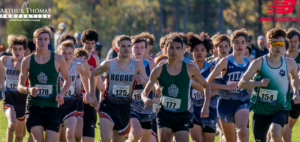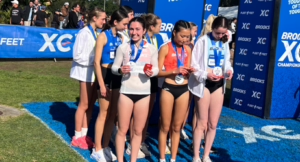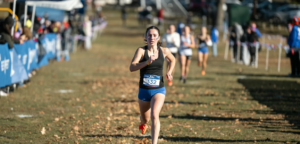In my last column I mentioned we always worked to prepare our athletes mentally and physiologically for championship racing. Rereading that I realized that it might sound like we have some sort of plan or scheme or specialized preparation for athletes ahead of competing in the big races. In all honesty, nothing could be further from the truth. We do prep our athletes for championship racing, but there’s no special program or method to our madness. As mentioned before, we have a high volume, aerobically based program, with few specific track workouts, but to think we just go out and run a lot would be misleading. While we do run some high volume, with my top athletes touching 60 miles a week – more accurately most athletes are in the high forties/mid fifties. However we do have many “efforts” intended to steel the mind as much as the aerobic system.

We do a lot of tempo based work, mixing long and short effort work, taxing the various systems differently and putting the athlete through a variety of feelings in the efforts. Varying the length of the “sting” can do wonders in stimulating the nervous system, without much negative effect on the physical system. Need more stimulus? Do more repetitions. Need a tougher stimulus? Add more intensity or lengthen the repetitions.
But as important as doing those efforts is framing the results. These workouts are great in showing improvement, and that goes a long way in preparing an athlete to perform better. Nothing like proof of effort to convince an athlete to take the next step, be more aggressive, willing to take more risk by believing they’re ready. But you have to make sure they can see it.
And we do that two ways. Firstly, in the effort, we let them know how they are doing. We get them to run relaxed and express how good they look doing so. We encourage them to hang on, to ride that edge, feel the repetitions come and see them add up. We reflect with the athlete once they’ve finished their workout so the evidence can sink in.

And we also have them record these efforts. For all our efforts and workouts, they are recorded on a giant index card. The seniors will have four cards by the end of their career, able to compare, seeing how far they’ve come since being a “newb”. In our first hill workout on day, three the freshmen will run eight 700 meter reps while as a senior they will likely run twenty, for 8.5 miles. With so many parts of the program similar year to year, it’s easy to notice how they’ve gotten faster and can handle more than they had previously. Hard for a kid to argue with the evidence staring them in the face.
And we have the cards from everyone who came before them. There’s nothing like looking at your card and pulling out one of those senior athletes from when you were an underclassman and being surprised you’re now capable of what they were doing.

We also refer to their good workouts throughout the season. “Remember when you killed those XC 800’s? That’s what today’s race should feel like.” Or, “remember the 15 x 300’s at race pace where you ripped off the last three five seconds fast. You’re ready.” Having those thoughts in their heads when it matters is important and makes them confident in their body of work. The best workouts fall flat if the athlete can’t access them mentally as well as physically.
And that’s the bulk of it. Individual athletes require different amounts of attention, some needing little extra from me to reach their best performance. Others need a bit more hand holding and I haven’t figured all that out. But when you let the evidence speak for itself, it often convinces the athlete the one question they always have. And that is, am I ready? And if you’ve done a good job getting them in shape the answer is always yes.
See you out there.











